#human footprint
Text
Is this "the first human-made textbook"?
Huge drawings of touchable animal tracks would be an ideal teaching tool for young hunters & trackers. These rock carvings in Namibia are hard to date, but the paper estimates they are at least 5000 to 7000 years old.
The authors of the paper sought out the assistance of local hunter and trackers to better identify the animals represented in the rock art. The range of species identified and the specificity of the depicted species was remarkable, showing the detail and depth of human knowledge of the natural world even thousands of years ago. (The trackers could tell the age and sex of many of the animals represented by the prints.)

Some of the carvings are in a narrow crevice, almost like it was a "test" where the student could move through the prints identifying them by touch. (that's just my guess for how they used it, the authors of the paper are more circumspect in their ideas about what this was for)
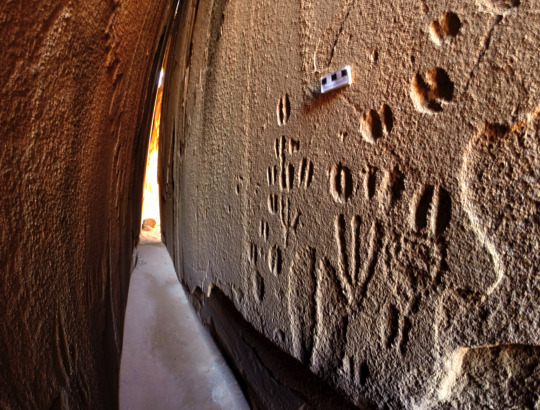
Some of the prints are from animals who no longer live in the region, possibly pushing the age of the site deeper into the past.



#rock art#early humans#Namibia#tracking#animal footprints#hunter gatherer#Doro!#footprints#human footprint#hooves#bushcraft#cave art#cave paintings#prehistoric#prehistory#teaching#education#learning#history#anthropology
143 notes
·
View notes
Text
Footprints scattered across what is now the desert of New Mexico were trod by human feet no earlier than 21,500 years ago, new research has confirmed.
The venerable age of these ancient traces in White Sands, New Mexico was revealed in 2021, to much awe and more than a little skepticism. Now, a team including some of the same scientists has performed more rigorous dating, confirming the controversial result.
It now seems more likely than ever that humans were, indeed, present in what is now North America during the Last Glacial Maximum.
Continue Reading.
358 notes
·
View notes
Text

Ryan Stalker, “Ocean Drifter.”
Goose barnacles (Thoracica), Portland, Dorset, England,
British Wildlife Photographer of the Year 2024 and Winner of Coast & Marine category.
© the photographers and British Wildlife Photographer of the Year
#art#surreal#photography#ryan stalker#pollution#ocean#drifter#portland#dorset#england#goose barnacles#wildlife#marine#underwater#british wildlife photography#marine pollution#human footprint#trash#waste
60 notes
·
View notes
Photo
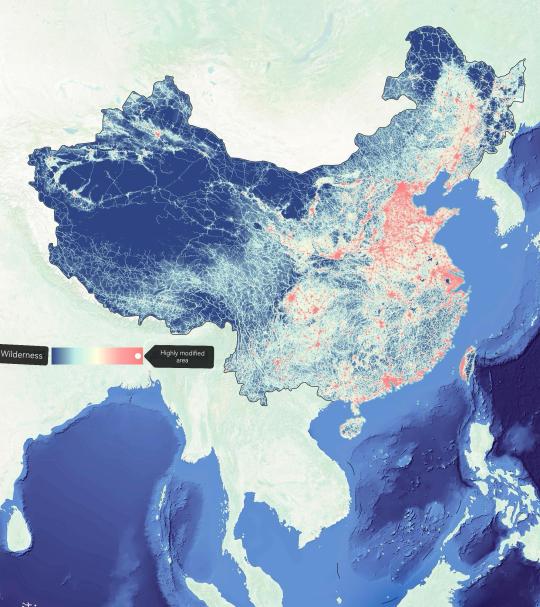
Human footprint dataset of China from 2000-2018
61 notes
·
View notes
Text
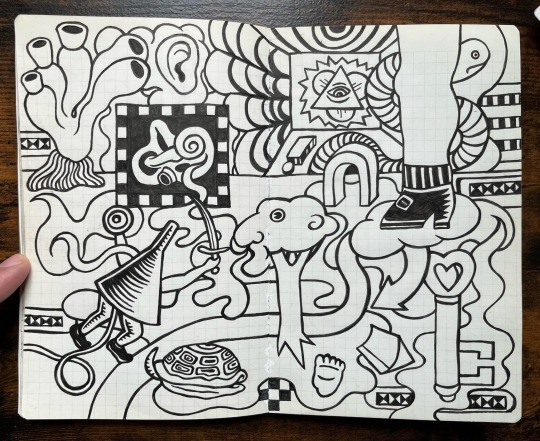

Couple more sketchbook pages
#artists on tumblr#sketchbook#patterns#grids#grunge#illustration#female giants#mixed media#abstract#surrealist art#turtles#Bosch#ink drawing#human footprint#nature#scientific illustration#pyschedelic#marine biology#inktober#sword#trippy#black and white#neoncore#illuminati#occult
72 notes
·
View notes
Photo






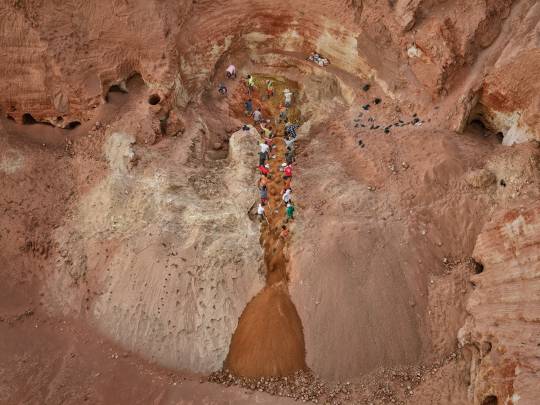
Edward Burtynsky, “African Studies”
From the diamond mines of South Africa to the richly textured landscape of Namibia’s Tsaus Mountains, the series spotlights the sub-Saharan region and its reserves of metals, salt, precious gemstones, and other ores.
“I am surveying two very distinct aspects of the landscape,” he says in a statement, “that of the earth as something intact, undisturbed yet implicitly vulnerable… and that of the earth as opened up by the systematic extraction of resources.”
Taken over seven years in ten nations—these include Kenya, Nigeria, Ethiopia, Ghana, Senegal, South Africa, Botswana, Namibia, Madagascar, and Tanzania—the aerial photos, which are compiled in a forthcoming book published by Steidl, present a dichotomy between a region irrevocably altered by humanity and one of immense possibility.
Since 2013 when it launched its Belt and Road initiative, China has invested billions of dollars in expanding its global presence, with many African nations as targets. This growth, along with international competition for access and power on the continent, has widespread economic, environmental, and governmental impacts, which Burtynsky explores through the series.
#art#photography#aerial#africa#human footprint#humanrights#edward burtynsky#south africa#landscape#kenya#nigeria#ethiopia#senegal#ghana#china#human impact#nature rights#poisened land#Consumerism
199 notes
·
View notes
Text



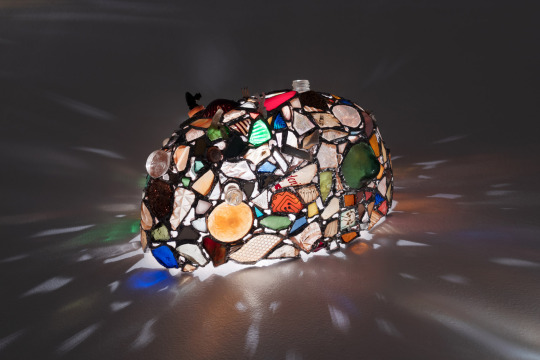

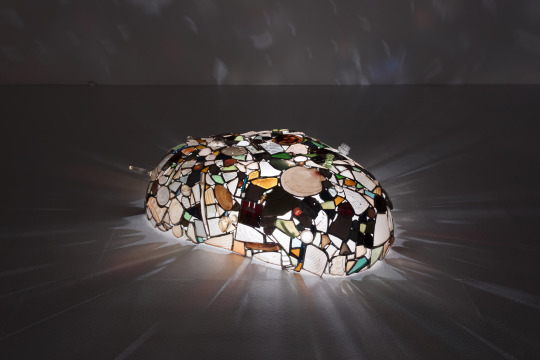



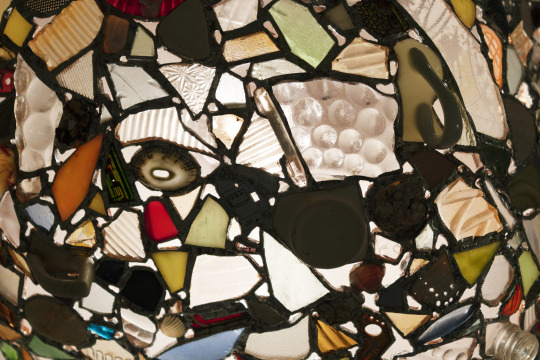
Bea Fremderman, "Weeds Compared to Flowers," 2023,
Along the shore of Dead Horse Bay in Brooklyn, New York, the tides slowly expose the contents of closed landfills. Depression-era glass, soles of shoes, and conglomerations of inorganic and organic materials litter the coastal zone.
Upon her first visit to Dead Horse Bay, Fremderman described the site as the most apocalyptic landscape she had ever experienced. Once a hub for rendering dead horses and for industrial and urban waste processing, storage, and incineration, the area became renowned for its putrefaction. Today, sections are closed due to chemical pollutants and radioactive contamination.
Fremderman imagines the personas of those who may have used the detritus she collects. After a deep cleaning process, she assembles her gatherings in a technique like that used to make stained-glass windows.
Lit from within, the amoeba-like forms guide visitors through the gallery. Upon closer inspection stems of goblets, electronic chips, and pieces of dinnerware can be identified within the assemblages. The textures, colors, and shapes emanating from the sculptures result in an immersive installation.
The work hopes to offer a link to place — in this case, a landscape where the human footprint contorts and is contorted by the environment. Through the re-presentation and re-purposing of waste, Weeds Compared to Flowers intends to visualize human interconnection with disposable objects, the Earth, and an unknowable future.
Installation view at the John Michael Kohler Arts Center.
#art#abstract#abstraction#forms#abstractart#sculpture#light#lighting art#installation#weed#flowers#earth#dead horse bay#brooklyn#human footprint#bea fremderman#waste#organic#glass#stained glass#consumerism#consumption#eco-freindly
38 notes
·
View notes
Photo

“Sleeping With Dandelions”
Lewis Newman recently won first prize in the Animal Portraits category of the 2023 British Wildlife Photography Awards, capturing a sweet image of a female fox moving through a woodland that has been partially destroyed by industrialism with a face full of dandelion floaties
© Lewis Newman/British Wildlife Photography Awards
#fairytale#star fox#animal#portrait#poetry#british wildlife photographt#lewis newman#dandelion#sleeping#Consumerism#woodland#earth#animals rights#humanity#human footprint
111 notes
·
View notes
Text

My Footprint, Sunkhaze Meadows
1 note
·
View note
Text
MY CAT HAS LEARNED HOW TO MIMIC HUMAN FOOTPRINTS
0 notes
Text
youtube
The oldest footprints of a child and a dog in the Great Temple
🐶🐾🏯
History through archeology and ancient languages. Chaghazanbil is one of the oldest ancient temples (ziggurats) located in the south of present-day Iran. This temple was built by "Untash Napirisha" around 1250, in praise of "Inshushinak", the guardian god of Susa.
Read More:
The oldest family pictures from Elam civilization (Iran) [Video]
Follow my YouTube channel. Silent tablets documentary, short videos from ancient history.
Follow my Twitter.
#Youtube#mesopotamia#ancient history#history#history of mesopotamian kings#antiquity#history of iran#archaeology#elamite#ziggurat#human footprint#animal footprint#dogs footprints#the oldest footprints of a child#the oldest footprints of a dog#ancient ziggurats in the world#ancient ziggurats in the mesopotamia#ziggurats of mesopotamia#history of mesopotamia#history of elamite empire#history of persia#history of ancient iran#brief history bites
0 notes
Text
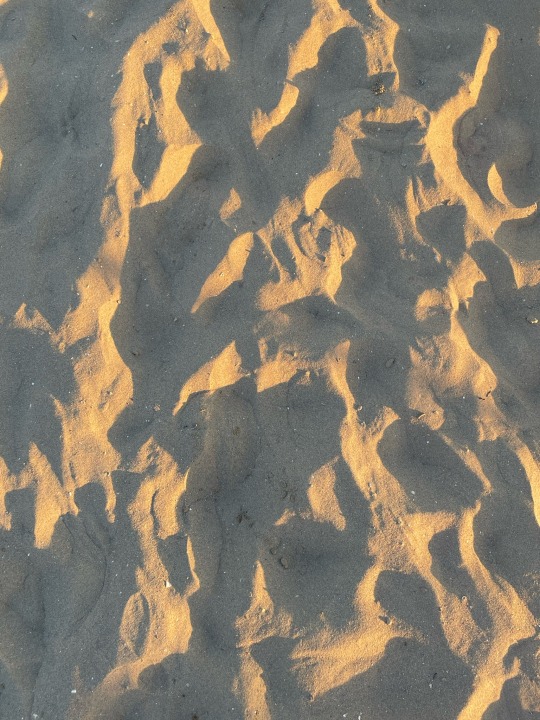
Peace seeking
#blue#nature#humans#human footprint#summer#sunshine#sunligth#beach#beachday#sunset#august#september#ocean#sea
0 notes
Text
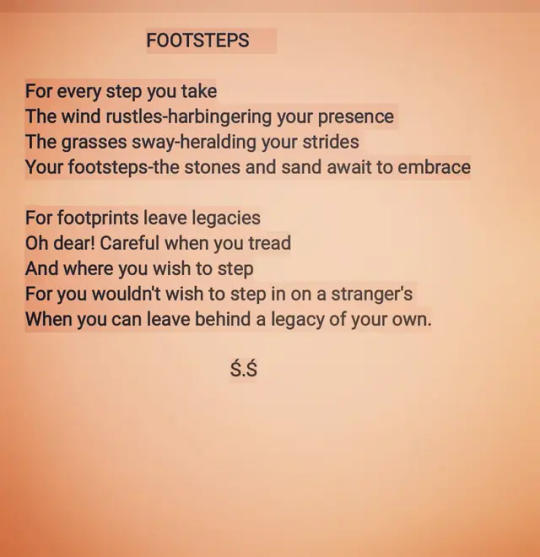
#beautiful quote#life quotes#books & libraries#thoughts#quotes#quoteoftheday#book quote#life quote#love quote life quotes#foot lover#footpath#digital footprint#footprints in the sand#human footprint#foot princess#print#my thougts#seriously though#criminal minds#mindfulness#creative writing#poem#poets on tumblr#writers and poets#dead poets society#poetry#original poem#writers on tumblr#writing#writerscommunity
0 notes
Text

Yang Yongliang, “The Falls” (2023),
4K video, 8 feet, dimensions variable
#art#surreal#photography#funnyshit#consumerism#china#the falls#falls#yang yongliang#climate change#climate catastrophe#climate emergency#human footprint#urban
11 notes
·
View notes
Photo
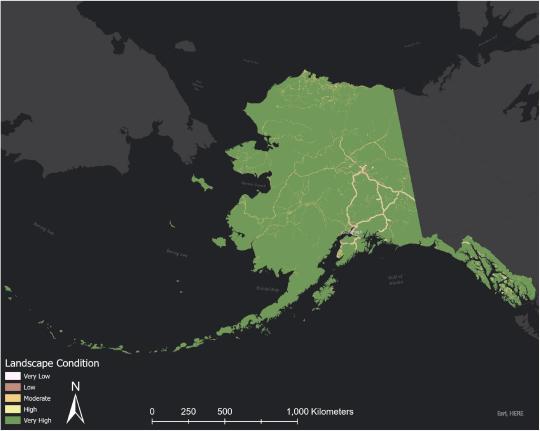
Landscape Condition of Alaska, based on the impact of human development.
95 notes
·
View notes
Text
This is gonna blow your mind...
During the Cretaceous Period there was a shallow sea across the interior of the United States. It left a band of chalk in a smile shape across the deep south. Because of the properties of chalk, the soil above is very good for growing cotton. Many cotton plantations were established. After the Civil War, formerly enslaved people stayed in this area. When modern voting maps that show how counties voted are overlaid on the geological maps- there is a band of blue counties right on top of that Cretaceous chalk.
Learn about it in the PBS series Human Footprint- The Ground Below
1 note
·
View note